Play is our natural driver as humans to discover, explore, and empathize with others. It is universal and can be applied as a powerful tool to start bridging divides and breaking inequities within our cities and communities. And yet, the term “play” is often absent from significant discussions surrounding the shaping of our urban fabric. Consistently, play is seen isolated within a specific space for a particular group. Our design practice pushes to shift that narrative and explore the idea of creating more “Playable Cities” as an ecosystem of multiscale open-ended playable opportunities for all demographics intertwined within our existing urban landscape that doesn’t just disrupt our daily lives but adds to it. The work we create begins to encourage people to think about these spaces that could become PLAYces: like public park benches, bus stops, street lights, or just the everyday spaces in-between. Exploring how these often once overlooked and underutilized situations can turn into inclusive, stimulating creative outlets for communal connection. The work becomes more than just a photogenic monument or moment; they become everchanging, engaging, open-ended platforms that showcase how play can impact our neighborhoods' identity, health, social, and economic value. We see this work as a catalyst for sparking a larger conversation about the value of implementing more inclusive, open-ended play within our everyday lives.
In order to create more inclusive and equitable neighborhoods, it is vital the community is the main driver within this participatory design process. To achieve this, the use of play methodologies within this process becomes as important as the end product itself. The use of play within this process creates a more inclusive space that gives the quiet person in the back as much of a voice as the loud ones in the front. The design practice in this process becomes a tool to help the community be the driver in developing what they want to see and utilize within their community. This community design process should not be about checking a box; it is about developing a relationship and understanding of what the community wants to see and discuss within their community.
The work showcases both the qualitative and quantitative impact of utilizing play methodologies within the physical development of our neighborhoods as well as in the process of creating these opportunities. It will begin to spark a larger conversation on shifting the narrative around the utilization of play beyond the playground and within our everyday in-between space while highlighting the use of open-ended play through various scales allowing us to create more healthier, inclusive, equitable, and economically viable neighborhoods and communities. Sharing this work and its impact allows others to explore how the implementation of open-ended play can be best utilized within their community.
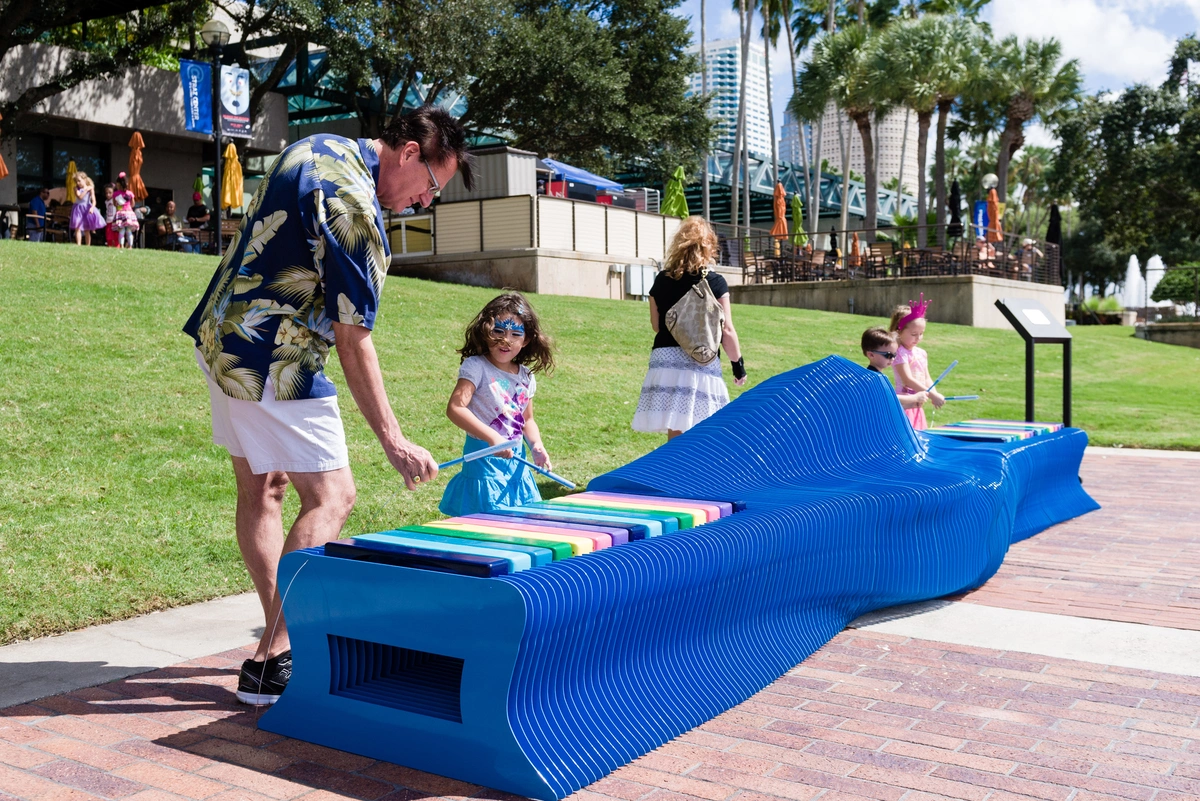
Why sit when you can play?” is a musical public park bench system we designed to begin to bring the everyday park bench back to life. It takes a new look at the traditional public park bench and how it can turn into a social hub for communal connection. The benches are one of our playable products that are custom made for a specific space and include musical sections each containing two octaves of notes that can be played with attached mallets.
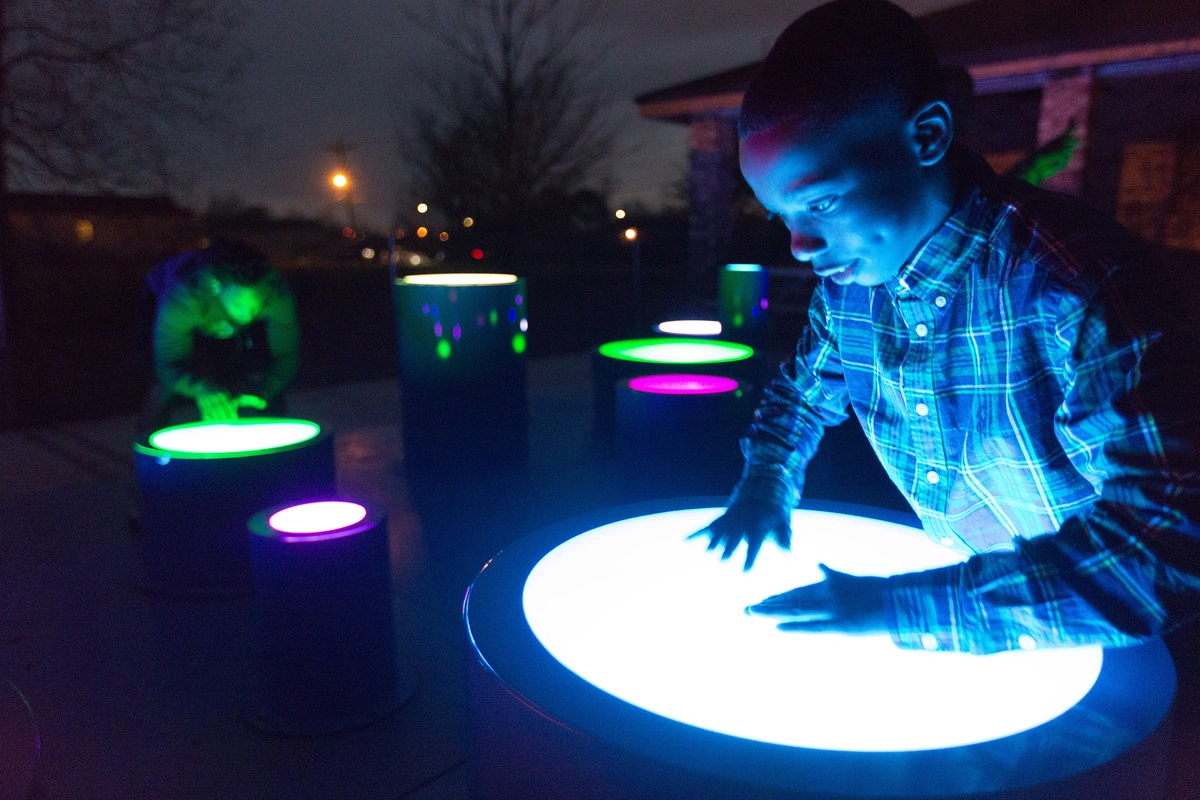
The Hangout uses sight, sound, and touch to transform a once underutilized abandoned lot into an inclusive, safe, and inspiring space for the community. The project is located in the Lower Ninth Ward community in New Orleans, LA, and was designed through a series of participatory design workshops with the community. All design aspects were driven by the feedback and conversations of the community including the sound and lights that change when you touch the tops of the cylinders.
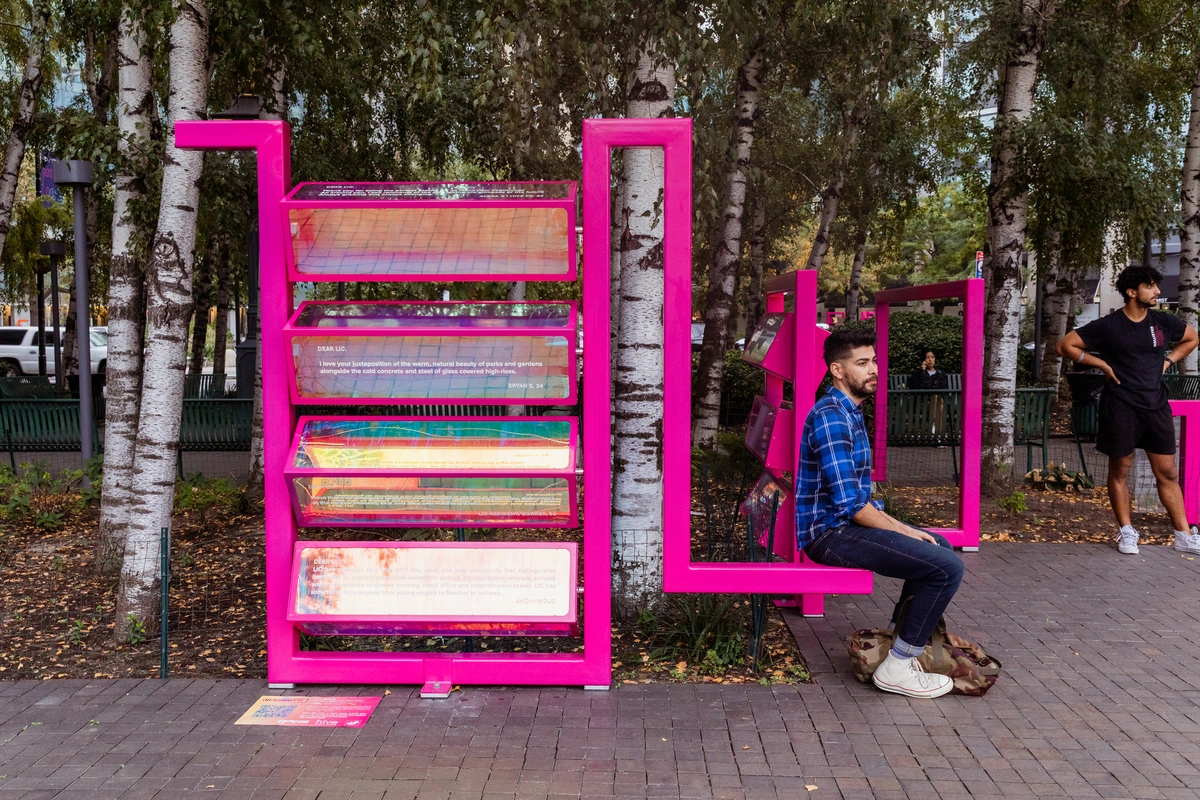
Ribbon was designed as a transformative communal platform for people to connect, share, and learn each other’s versions of Long Island City, NY. On each of the rotating pieces are love letters submitted by community members over time. It showcases how the work itself can become a part of the participatory design process. It creates an opportunity for the community to talk about their city through the lens of love letters that will later be used to develop a more permanent opportunity.
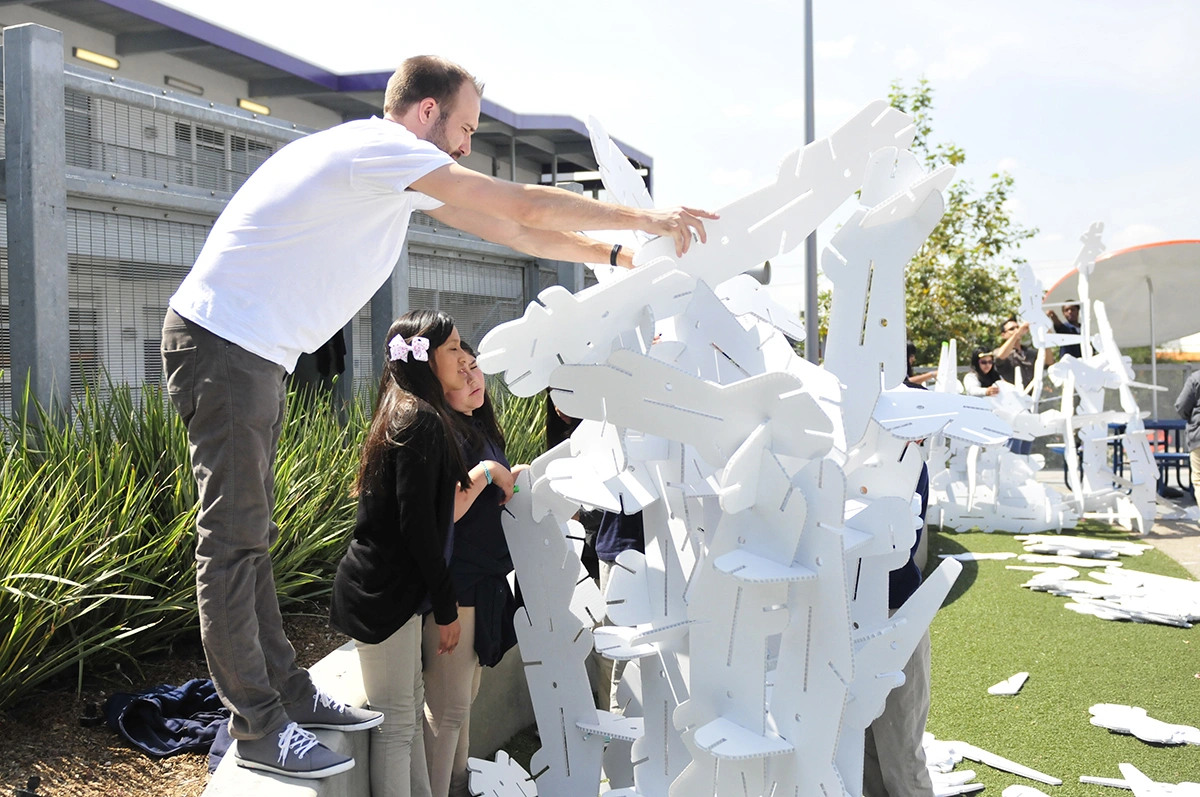
The Kit of Imagination is a playable tool that allows communities to explore spatial opportunities within their space. It becomes a way for community members of all ages and backgrounds to playfully work together in a space. The kit isn't about the end product but the conversations that come from the interaction. In this image, you can see people playing with the kit to spark ideas around a project.
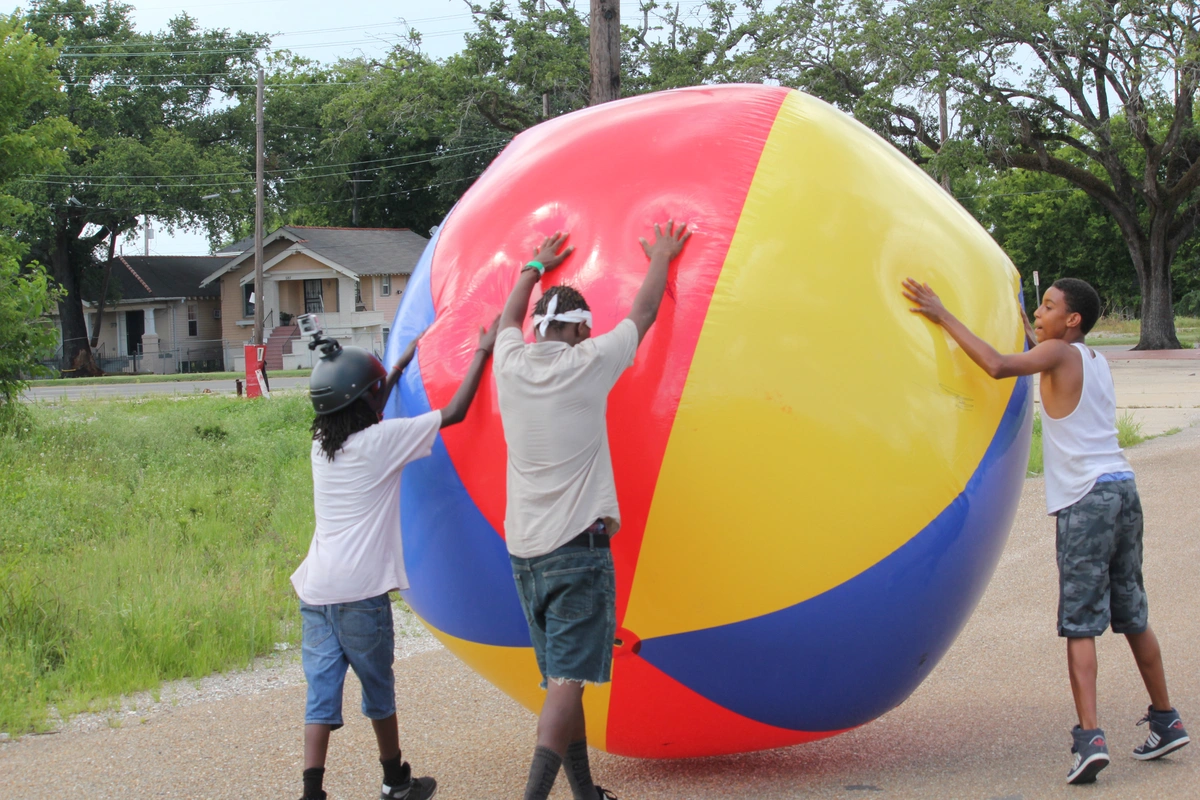
Play is a critical tool we use within our participatory design process to get community members feeling comfortable within a space and allow us all to get to know one another at a deeper level without sometimes even having a conversation. In this image, local kids in New Orleans, LA can be seen pushing our giant beach ball through the streets to get the community to come out to a community play workshop we were holding.
The Urban Conga is an international award-winning multidisciplinary design studio based in Brooklyn, NY. The studio is made up of a diverse group of creatives focused on sparking social activity and community interaction through open-ended play. They achieve this by working with communities to create inclusive, engaging, and site-specific opportunities that spark creativity, exploration, and free-choice learning for all demographics within the built environment. Their work explores the idea of a “Playable City” as an ecosystem of multiscale playable opportunities intertwined within the existing urban infrastructure that doesn’t just disrupt our daily lives but adds to it. Through this work they have collaborated with communities, organizations, businesses, municipalities, and institutions worldwide delivering permanent spatial interventions, temporary installations, workshops, lectures, development plans, and public policy recommendations.
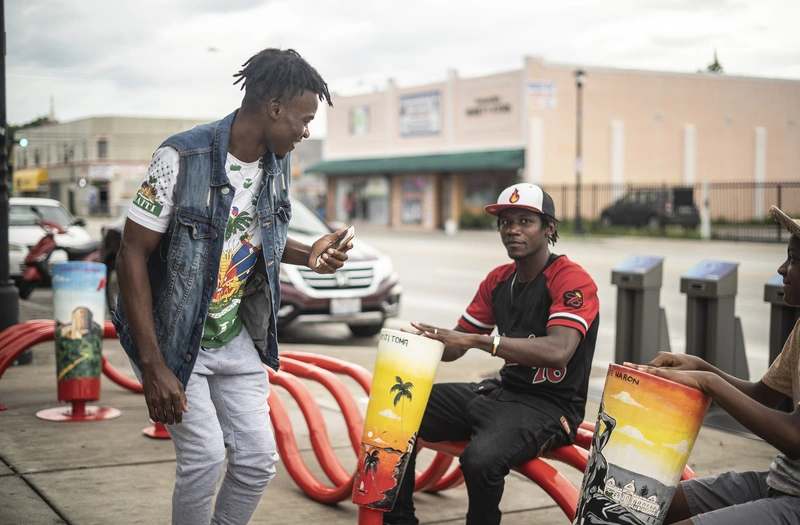
Entangled was designed as a platform for residents and visitors to learn and share the history, stories, and music of the Haitian culture outside the doors of the Little Haiti Cultural Complex in Miami, FL. The playful bench consists of three drums designed off of the traditional Rada Battery Haitian drums.
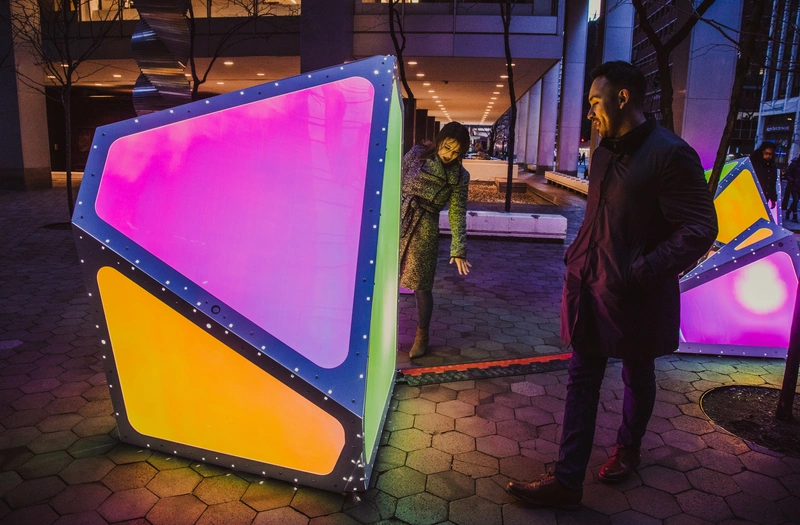
Oscillation is a traveling installation that uses sight, sound, and movement to spark spontaneous communal interaction. It acts similar to the musical instrument a Theremin, and as you move around the work it plays different pitches and sounds based on your movement. It is a great way to showcase the impact of play to stakeholders as a short-term investment within an area. It is currently traveling around the world sparking spontaneous dance parties and jam sessions between strangers all over.
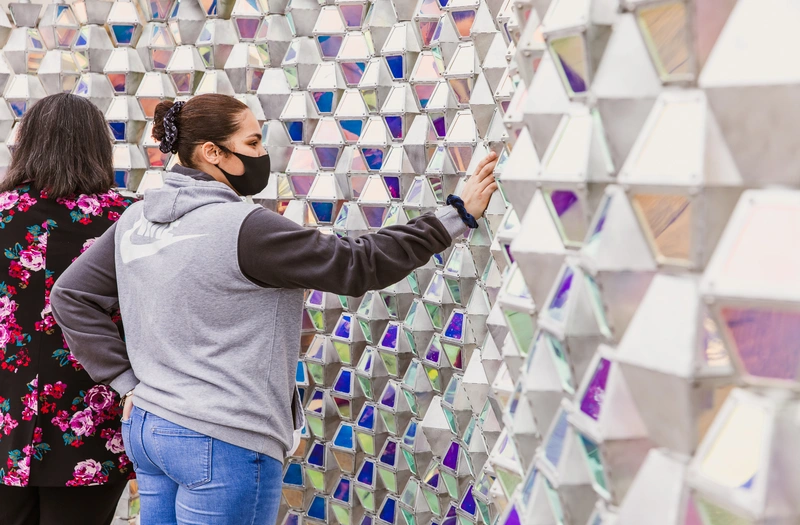
“Ripple” was designed with the Rochester, NY community to serve as an ever-changing landmark that responds to the people, the landscape, and the interactions between them. The design was inspired by the flowing movement of the Genesee River, the main artery running through the city that serves as an integral part of the area’s history. The permanent work is made up of reflective pixels that can be rotated allowing the work to become a reflective message board for the community.
